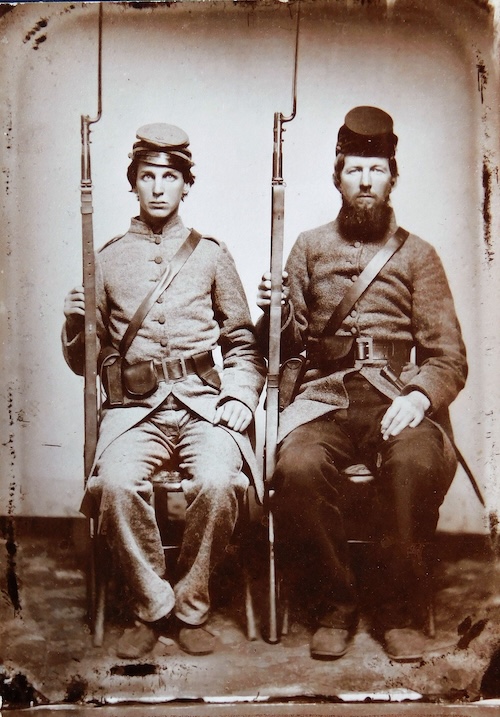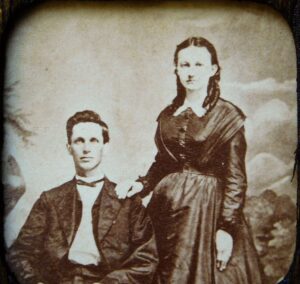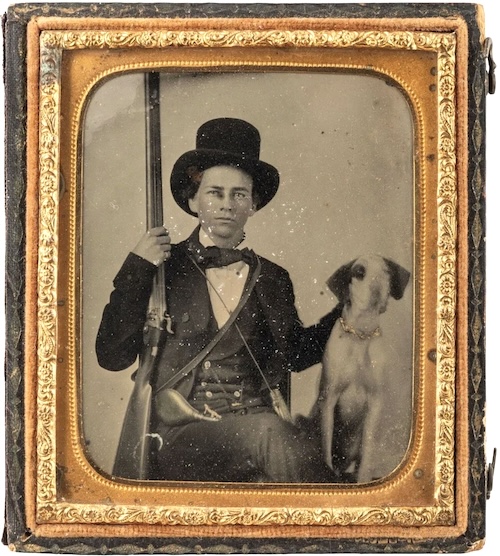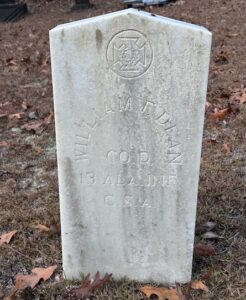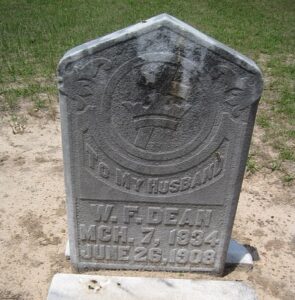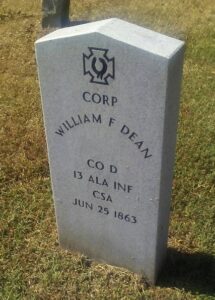Rufus King Felder and his cousin Miers Martindale Felder enlisted together in July 1861 near their homes in Washington County, TX, and joined the Dixie Blues, later Company E of the 5th Texas Infantry. They had their photographs taken soon afterward.
Miers was seriously wounded at Manassas, VA on 30 August 1862 and was disabled for further service, but Rufus was with his company through all their battles, including on South Mountain and at Sharpsburg, MD in September 1862, and was surrendered at Appomattox Court House in April 1865.
He returned to Washington County and farmed and raised livestock, amassing a prosperous 800 acre operation by his death at age 82 in 1922.
In 1868 he married preacher’s daughter Margaret Eliza Matthews (1847-1884) and she bore him eight children. I believe these are the newlyweds:
Margaret died in 1884 birthing their last child, daughter Margaret Eliza (1884-1978), and Rufus re-married the following year, 20 year old Mary Loula Virginia Nelson (1865-1942), daughter of a local physician. Rufus was then 45. They had 4 more children by the turn of the century.
Notes
The photographs above were shared to Rufus’ memorial by Karen Webster in 2018; the picture of Rufus and Miers is in the Texas Heritage Museum at Hill College, Hillsboro, TX.
Richard C Simpson (c. 1859)
5 May 2025
Here’s the very image of pre-war South Carolina aristocracy: a young Richard Caspar Simpson, then about 20 years old, posing with his shotgun and hunting dog.
He was oldest son and 2nd of 8 children of wealthy physician and slaveowner John Wells Simpson and his second wife Eliza Adams (1810-1854) and was raised in the Laurens District in upstate South Carolina. He graduated from South Carolina College (now USC) in Charleston in 1859 and was studying to be a doctor when the war began.
Along with a number of brothers, step-brothers, and cousins, he enlisted as a Private soldier in the 3rd South Carolina Infantry in April 1861 and was appointed Corporal by the fall of 1862.
His apparently unlimited future ended when he was killed in the battle at Sharpsburg on 17 September 1862.
Notes
This remarkable photograph was contributed to his online memorial by Lynne Lewellen.
I’ve spent hours today trying to untangle the military, family, and burial records that have been attached to William Fitzgerald Dean, late Corporal, 13th Alabama Infantry. I think I have the gist of it now, but what a mess. There is at least one other soldier with similar history and name, he of the 14th Alabama, which confuses the work.
I think this clue helps narrow my William’s identity – it’s an application for a government headstone filed by the Marion County, GA chapter of the United Daughters of the Confederacy in October 1932.
Here’s that stone, delivered and placed in Liberty Cemetery near Buena Vista, GA in February 1933:
But I’m not sure he’s actually buried there. It seems likely he’s here, under a stone placed by his widow about 10 miles away in the Shiloh-Marion Baptist Church Cemetery, presumably soon after his death in 1908:
And to add to the confusion, there’s this one, in Hollywood Cemetery in Richmond.
And no, our William didn’t die there in 1863. I’ve not found who it might be, instead, though.
Notes
The grave marker application is from United States, Headstone Applications for U.S. Military Veterans, 1925-1949, US National Archives, online from the FamilySearch database.
Each of those gravestone photos is thanks to contributors to the Findagrave database; from Liberty, Shiloh-Marion Baptist, and Hollywood Cemeteries, respectively.
His Hollywood marker is also among my growing collection of modern stones that got it wrong.
